Celery Experiment Helping to Demonstrate How Fossils are Formed
With rocks and fossils now part of the National Curriculum for science at Key Stage 2 and with many schools running a term topic focused on dinosaurs as part of their scheme of work with Reception and Year 1, our team members have received lots of requests from teachers to help them explain how fossils are formed. We do cover this subject area in our dinosaur workshops but here is a simple experiment that the children can conduct that demonstrates an important principle in fossilisation.
How Do Fossils Form?
The vascular system of plants can be used to suggest how open spaces in a living organism can become filled with minerals that crystallise out of water seeping through the sediment that the remains have been covered by. The filling up of the pores and open spaces is known as permineralisation. This process helps to explain how some types of fossil can be formed.
By studying the movement of coloured water in a stalk of celery the children can observe how liquid is moved around a plant. An experiment such as this demonstrates that plants have spaces inside them, which allow permineralisation (and replacement for that matter), it also leads in very nicely to the work in the English national curriculum about the structure of plants.
National Curriculum Links (England)
- Plants (Year 1, 2, 3)
- Living Things and their Habitats (Year 2, 4, 5, 6)
- Rocks (Year 3)
- Animals including Humans (Year 1-6)
Preliminary
Ask the class what are fossils? Explore ideas about how fossils form. Stress that fossils can be formed over very long periods of time and some fossils are formed when the spaces inside an animal or plant that has died gets filled with minerals and slowly over time the remains of the plant or animal turn to stone (petrification). It is this process, that explains in part how fossils are made.
This experiment will permit the children to see that living matter has spaces inside, it is these spaces that can be filled with minerals as part of the fossilisation process.
What You Will Need – Teaching Resources
How Fossils Form (Celery Experiment) Resources
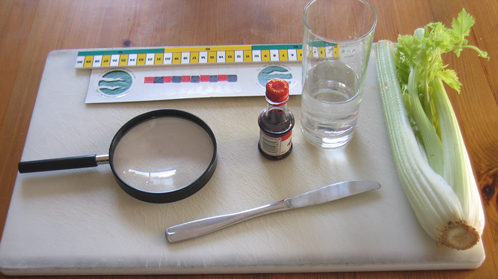
Resources = plant material (celery recommended), magnifying glass, water, glass, food colouring, chopping utensil, chopping board or surface and a ruler
Picture credit: Everything Dinosaur
Using Celery to Demonstrate Fossil Formation
Resources = celery stalks, glass or clear plastic beaker, a few drops of food colouring (we found red or blue works best), magnifying glasses, a simple chopping tool, a chopping board, ruler and some tap water.
How Fossils Form – The Experiment (Part 1)
- Divide the class up into small groups, provide each group with their own set of resources as outlined above.
- Have the children carefully chop the top and bottom of their chosen celery stalk(s), if resources allow have them choose stalks with and without leaves.
- Using the magnifying glasses, have each group observe what they can see when they study the stalk ends. The bottom part of the celery stalk should show very clearly evidence of a vascular system. Record this information.
Examining and Recording What Can Be Observed
Picture credit: Everything Dinosaur
How Fossils Form – The Experiment (Part 2)
- The length of each stalk can be measured (remember to include the length of the leaves on any stalks), these measurements can be recorded.
- A quantity of water can then be put into the beaker or glass. A precise measurement is not needed but it is important to make sure that the bases of all the stalks will be covered.
- Carefully, each group puts a couple of drops of the food colouring into the glass or beaker. Only two to three drops will be needed. A cap full of food colouring will be sufficient. The water can be given a quick stir.
Adding the Food Colouring to the Beaker/Glass
Picture credit: Everything Dinosaur
Place the celery to be tested in the beaker/glass, record the time when this was done.
Time to Leave Your Fossil Experiment
Picture credit: Everything Dinosaur
It may take several hours, but slowly capillary action will permit the coloured water to move up the plant tissues. This experiment not only highlights the water transportation system in plants (xylem) but also demonstrates that spaces in living organisms have the potential to be filled by minerals such as calcium carbonate or phosphate that are dissolved in water. This experiment is demonstrating how living things can become filled with minerals dissolved in water which can lead to petrifaction (means turning to stone), the fossilisation process.
How Fossils Form – The Experiment (Part 3)
- Examine the celery leaves and stalks after 4 hours (later on in the school day). What changes can the children see? Can they record how far the coloured water has travelled? What differences can be seen between stalks?
Examine the Celery Stalks after about Four Hours
Picture credit: Everything Dinosaur
What differences can the children observe with their fossil formation experiments after a day, two days, a week? Can the children measure the amount of red colouration they see after each time interval?
After One Day the Fossil Formation Experiment Will Show A Distinctive Colour Change
Picture credit: Everything Dinosaur
Hard biological materials such as bones, shells and wood contain tiny pores and other spaces (such as the Haversian canals in bones – see close up picture of dinosaur fossil bone provided below). When buried in sediment, these pores and spaces can be filled up with minerals that crystallise out of the water seeping thorough the layers of sediment. These extra minerals are permineralising the organism, the start of the process of turning a once living thing into stone has begun.
A Close up View of Fossilised Dinosaur Bone Showing Internal Structure
Picture credit: Everything Dinosaur
The picture above shows the internal structure of a dinosaur tail bone. Bones just like teeth, shells and even wood contain pores, it is these open spaces that can become permineralised as part of the process of fossilisation.
Extension Ideas
- Why was it easier to see the movement of water when the leaves were examined (links to the role of different parts of the plant)?
- If the hard parts of organisms like bones and teeth can permineralise and become fossils, what happens to the soft parts such as gums, skin, muscle?
- What examples of fossils formed from the soft parts of animals and plants can the children find? How were these fossils formed?
- What other types of fossils can be found? Think moulds, casts and trace fossils like burrows and footprints.
- Record and photograph this experiment and utilise it again when exploring plants, plant transport systems and photosynthesis with older year groups
Extra Notes – Capillary Action
Capillary action, the movement of liquid through tubes takes place because water molecules stay close together (cohesion forces) and because water molecules are attracted to and stick to other substances (adhesion forces). The adhesion of water to the walls of a narrow vessel such as xylem in a plant stem will cause an upward force on the liquid at the edges where the water and the surface of the tube interact. This will result in the meniscus turning upward. Surface tension acts to hold this water at the surface of the tube (the front of the water column) intact. Capillary action will occur when the adhesion to the walls of the tube is stronger than the cohesive forces between the water molecules. It is through this capillary action that water is transported around plants.
To view the huge range of educational, prehistoric animal themed items available: Dinosaur Toys, Games and Crafts.
If you need to speed up the experiment, some change in colouration can be seen after two hours or so, especially if a wilted piece of celery with leaves is chosen.
For information on Everything Dinosaur’s fossil and dinosaur themed workshops in schools and other activities: Email EverythingDinosaur.


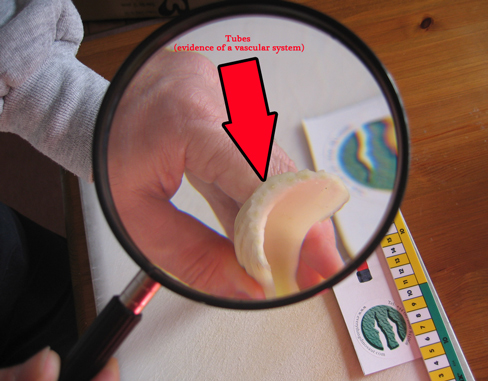
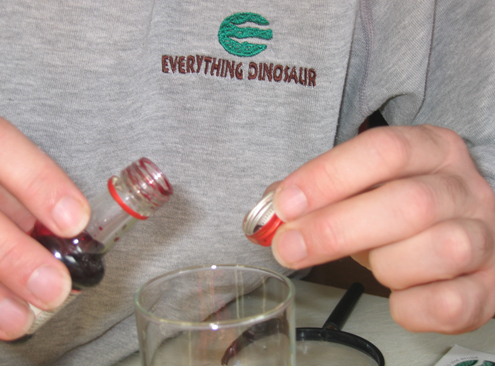
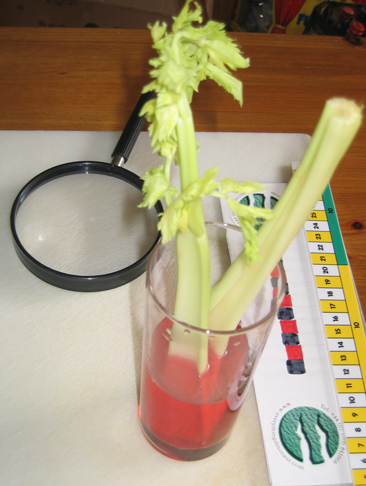
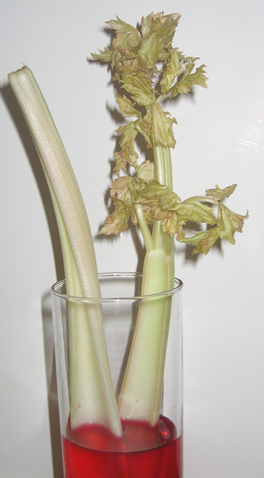
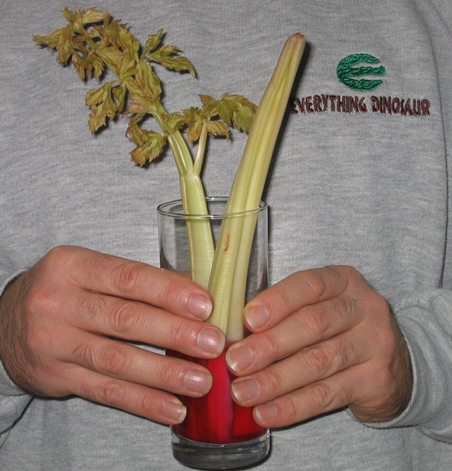
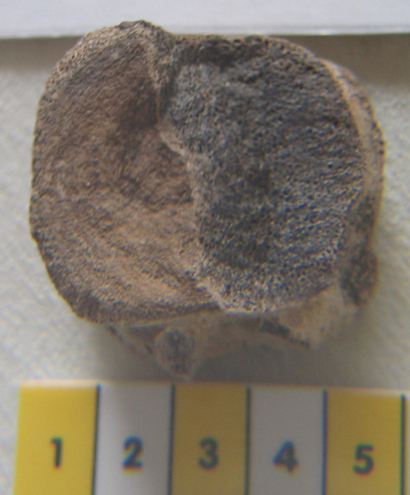
Leave A Comment